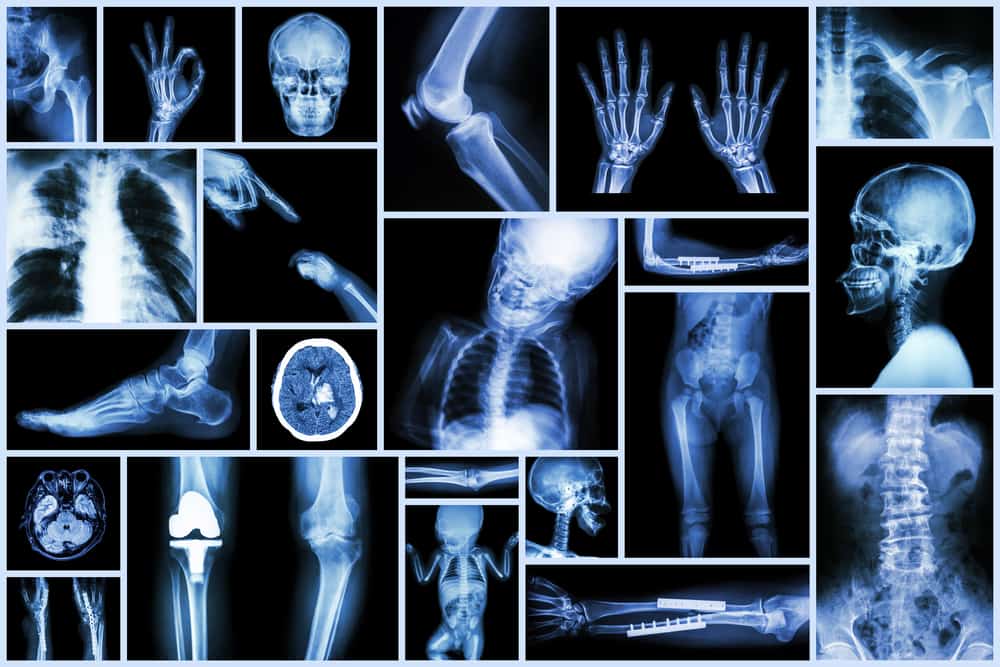
What is Osteogenesis Imperfecta?
Osteogenesis Imperfecta, or OI, is a genetic disorder that causes problems in the body’s ability to make strong bones. OI is also known as Brittle Bone Disease, which describes the hallmark trait of the disease – bones that break incredibly easily.
What causes OI?
Collagen is a protein that provides the framework and structure for bones, while calcium phosphate is a mineral that makes bones firm and strong. For bones to be strong, flexible, and difficult to break, the body needs to produce the correct amounts and quality of collagen and calcium phosphate. So a child won’t develop OI from not drinking enough milk – OI is a result of inadequate and poor collagen production by the body.
In dominant OI, the body has produced too little of type I collagen or a poor quality of collagen because there is a mutation in the collagen genes. Recessive OI is a result of gene mutations that interfere with the body’s production of collagen.
In dominant OI, the body has produced too little of type I collagen or a poor quality of collagen because there is a mutation in the collagen genes. Recessive OI is a result of gene mutations that interfere with the body’s production of collagen.
Types of OI
OI is divided into types based on the severity of the disease, which also dictates how many bones they may fracture in a lifetime.
Type I:
Type I:
- Mildest and most common form – about 50% of all people diagnosed with OI have this type
- Tinted sclera – the whites of the eyes appear blue, purple, or gray
- Relatively few fractures and minimal deformities, mainly before puberty
- Inherited from a parent or spontaneous mutation
- Lower-than-normal amount of type I collagen, but structure of collagen is normal
- Short to normal stature
- Triangular face
- Possibly spinal curvature
- Most severe form of OI
- Infants are born with very short extremities, small chests, and soft skulls with possible macrocephaly (large head)
- Intrauterine fractures in skull, long bones, and/or vertebrae
- Sclera appear dark blue or gray
- Underdeveloped lungs and respiratory problems
- Most severe type for children who survive the neonatal period
- Infants are born with shortened and bowed limbs, small chests, and a soft skull
- May be multiple fractures at birth
- Children have a very short stature, and adults stand at 3’6” or less
- Head is large for the body size
- Triangular face shape as a result of overdevelopment of the head and underdevelopment of the facial bones
- Tinted sclera
- Fracture rate varies
- Ranges in severity from Type I to Type III
- Diagnosis may not be made at birth since the child might not start fracturing bones until they can walk
- Possible bowing and shortness of long bones
- Color intensity of sclera varies – may start light blue then turn white in late childhood
- Often the result of new gene mutation
- Moderately severe – similar to Type IV in terms of fracture rate and skeletal deformity
- Presents with hypertrophic calluses in largest bones at the fracture site – delayed healing where fibrocartilage (bundle of collagen) forms between the fracture fragments
- Restricted forearm rotation
- Represents 5% of moderate-to-severe OI patients
- Extremely rare type – moderately severe and similar to Type IV
- Known for mineralization defect that can be seen in biopsied bone
- Recessively inherited OI (mutations in genes that affect collagen)
- Resembles Type IV in appearance and symptoms
- Sometimes children can have small heads and round faces
- Long bones may be short
- Short stature
- Recessively inherited OI (mutations in genes that affect collagen)
- Resembles Type II or III in appearance and symptoms (except sclera appear white)
- Characterized by severe growth deficiency and an under-mineralized skeleton
Diagnosis
OI can often be diagnosed based on symptoms, requiring a clinical evaluation, patient history, and a variety of tests. Clinical features of OI vary greatly based on the type, and even within the same type of OI there could be many different signs and symptoms.
Diagnosis could require a biopsy of the skin to assess whether abnormalities are present, and a blood sample can be used to check for the presence of the genetic mutation that causes OI using DNA. It can take several weeks to receive the results of these tests, but they are believed to detect about 90% of all type I collagen mutations.
OI can also be diagnosed before birth based on ultrasound, amniocentesis (testing the amniotic fluid), or chorionic villus sampling (using cells from the placenta to test for genetic disorders). The ultrasound may reveal fractures or bowing of the long bones as early as 16 weeks into the pregnancy.
A person who is diagnosed with OI has a 50% chance of passing on the disorder to a child. Genetic counseling is recommended for couples at risk of having a child with OI before getting pregnant.
Diagnosis could require a biopsy of the skin to assess whether abnormalities are present, and a blood sample can be used to check for the presence of the genetic mutation that causes OI using DNA. It can take several weeks to receive the results of these tests, but they are believed to detect about 90% of all type I collagen mutations.
OI can also be diagnosed before birth based on ultrasound, amniocentesis (testing the amniotic fluid), or chorionic villus sampling (using cells from the placenta to test for genetic disorders). The ultrasound may reveal fractures or bowing of the long bones as early as 16 weeks into the pregnancy.
A person who is diagnosed with OI has a 50% chance of passing on the disorder to a child. Genetic counseling is recommended for couples at risk of having a child with OI before getting pregnant.
Treatment
Treatment is based on the specific symptoms on a case by case basis. The goal of treatment is to prevent symptoms, maintain mobility, and strengthen bone and muscle. There is not yet a cure for OI.
Treatment plans may include physical therapy, using wheelchairs, braces, or other mobility aids, and rapid treatment for fractures. Surgical and dental procedures may be used – a surgical procedure called “rodding” involves inserting metal rods down the length of long bones to provide strength and correct or prevent deformities. Some medications used for treatment include growth hormone treatment, bisphosphonates (inhibit mineralization or resorption of the bone), teriparatide (only for adults), and gene therapies.
In addition to medical treatments, people with OI are encouraged to maintain a healthy weight with a nutritious diet and regular exercise (swimming is a good choice for people with OI). They should also avoid smoking, excessive alcohol and caffeine use, and taking steroids – these activities can deplete bone mass.
Treatment plans may include physical therapy, using wheelchairs, braces, or other mobility aids, and rapid treatment for fractures. Surgical and dental procedures may be used – a surgical procedure called “rodding” involves inserting metal rods down the length of long bones to provide strength and correct or prevent deformities. Some medications used for treatment include growth hormone treatment, bisphosphonates (inhibit mineralization or resorption of the bone), teriparatide (only for adults), and gene therapies.
In addition to medical treatments, people with OI are encouraged to maintain a healthy weight with a nutritious diet and regular exercise (swimming is a good choice for people with OI). They should also avoid smoking, excessive alcohol and caffeine use, and taking steroids – these activities can deplete bone mass.
Prognosis
The prognosis relies on the type of OI and the severity of symptoms – when OI is fatal, it is most often due to respiratory failure because of reduced lung capacity.
Many adults and children who have OI are able to live productive and successful lives.
Many adults and children who have OI are able to live productive and successful lives.
OI and EMS
It’s important to remember that a disorder like OI can look like physical abuse. A child with more severe OI will have current fractures, signs of old fractures, and some still healing fractures. Many parents of children with OI will have a note from a doctor explaining the disorder. Remember to assess for all signs and symptoms to get a full picture of the patient, and that many times broken bones may have no external signs of trauma.
When handling a patient with diagnosed OI, be as gentle as possible – avoid any sudden pulling of the limbs, neck, or spine, and never try to straighten a bent limb because it is easy to cause more damage to a patient like this. Remember that even putting on a BP cuff too tightly, or tightening the stretcher straps, could result in a bone fracture. Pediatric-sized equipment may be more appropriate for adults with OI who have a small stature.
Respect what the patient or family members say in terms of the best way to handle the patient since they have more experience with the disorder. The parent may suspect a specific injury based on past injuries and the child’s reaction to the break. Stabilize any potential fracture to prevent further damage.
Many adults and children who have OI are able to live productive and successful lives.
When handling a patient with diagnosed OI, be as gentle as possible – avoid any sudden pulling of the limbs, neck, or spine, and never try to straighten a bent limb because it is easy to cause more damage to a patient like this. Remember that even putting on a BP cuff too tightly, or tightening the stretcher straps, could result in a bone fracture. Pediatric-sized equipment may be more appropriate for adults with OI who have a small stature.
Respect what the patient or family members say in terms of the best way to handle the patient since they have more experience with the disorder. The parent may suspect a specific injury based on past injuries and the child’s reaction to the break. Stabilize any potential fracture to prevent further damage.
Many adults and children who have OI are able to live productive and successful lives.
Sources & More Information
National Organization for Rare Disorders, “Osteogenesis Imperfecta” https://rarediseases.org/rare-diseases/osteogenesis-imperfecta/
NIH – Genetics Home Reference, “Osteogenesis Imperfecta” https://ghr.nlm.nih.gov/condition/osteogenesis-imperfecta
Osteogenesis Imperfecta Foundation, “Pregnancy: Expecting a Child with OI” https://www.oif.org/site/DocServer/Pregnancy_Expecting_a_Child_with_OI.pdf?docID=7222
Osteogenesis Imperfecta Foundation, “Types of OI” https://www.oif.org/site/PageServer?pagename=AOI_Types
Osteogenesis Imperfecta Foundation, “Fast Facts” https://www.oif.org/site/PageServer?pagename=fastfacts
Osteogenesis Imperfecta Foundation, “Emergency Department Management” https://www.oif.org/site/PageServer?pagename=ERMgmt
NIH – Genetics Home Reference, “Osteogenesis Imperfecta” https://ghr.nlm.nih.gov/condition/osteogenesis-imperfecta
Osteogenesis Imperfecta Foundation, “Pregnancy: Expecting a Child with OI” https://www.oif.org/site/DocServer/Pregnancy_Expecting_a_Child_with_OI.pdf?docID=7222
Osteogenesis Imperfecta Foundation, “Types of OI” https://www.oif.org/site/PageServer?pagename=AOI_Types
Osteogenesis Imperfecta Foundation, “Fast Facts” https://www.oif.org/site/PageServer?pagename=fastfacts
Osteogenesis Imperfecta Foundation, “Emergency Department Management” https://www.oif.org/site/PageServer?pagename=ERMgmt


